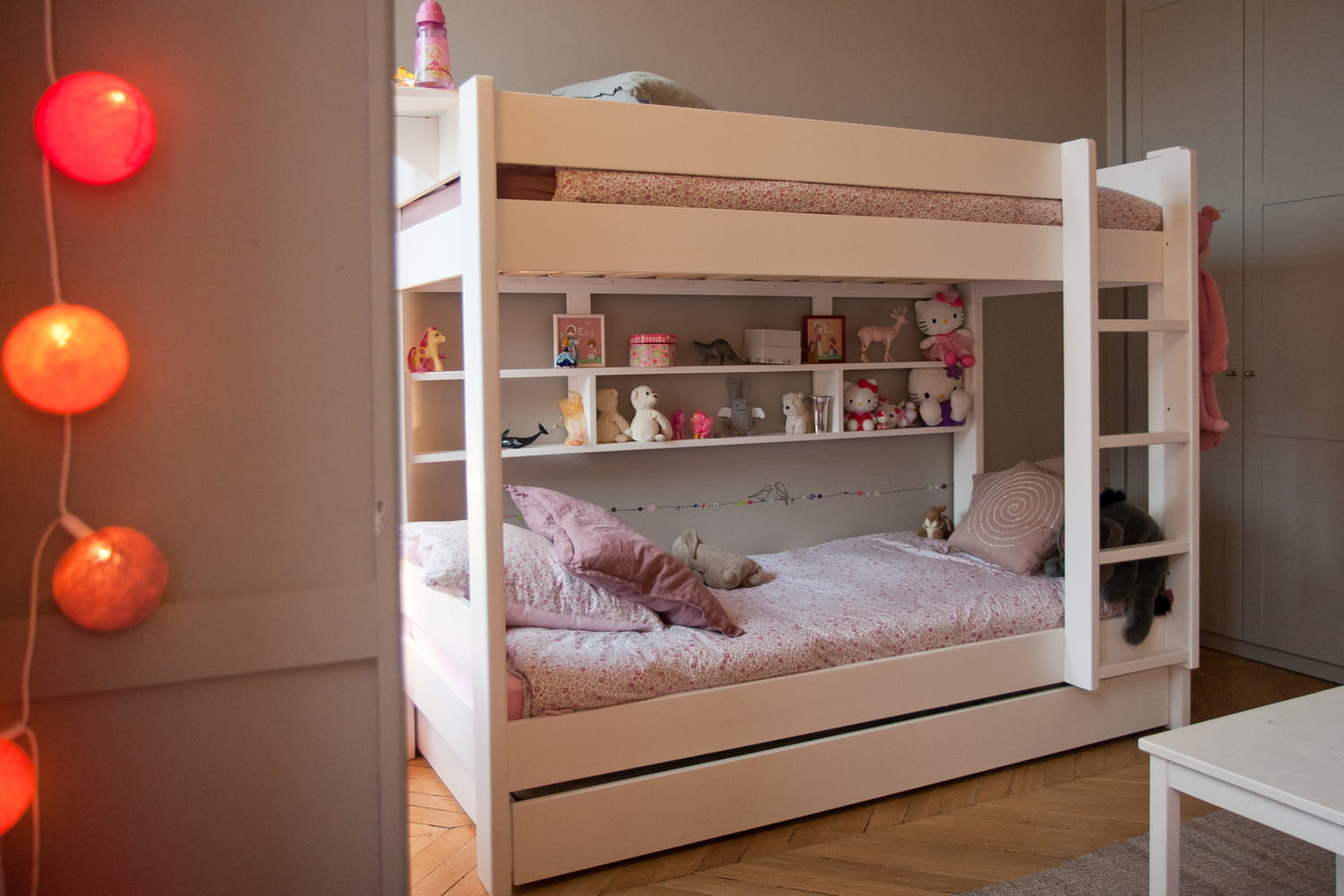Practical to save space, the bunk beds make it possible to optimize the space and easily arrange a small room. What model to choose, advantages, disadvantages and safety rules … Advice not to be mistaken.
Adapted to small spaces, Bunk beds allow you to save space without cutting too much on comfort. This type of structure is Ideal for children who share a roomat home or at grandparents during the holidays. Another space saving option: a bed in height, type mezzanine, for teens in search of their own space, or quickly congested studios.
If you will not avoid the argument to find out who will take the top bed, however, know that the bunk bed is not adapted to children under 6 years old. Toddlers will therefore sleep on the bottom mattress. You will probably not escape either to chatter and other giggles once the lights are turned off. Some will appreciate these moments of complicity, others will regret a lack of intimacy, but for everyone to feel comfortable, there are certain things not to neglect.
The points to check with a bunk bed
Security is essential with bunk beds
Safety is of course an aspect on which one cannot compromise. Check that access to bed, especially the upper one, is secure, and that construction meets European standards. The scale (or the staircase) must be solid and well fixed. Children often like to climb there to play, it is better to make sure that it is not likely to drop out. Remember to check the quality of the slats, especially for the top berth. Also make sure that the bunk bed is equipped with a barrier on both sides to avoid animal accidents: it can happen to forget that you are in height and fall from the bed in the middle of the night or when you get up in the morning. Better to prevent than cure.
The stability of bunk beds
This is another important point. A lack of stability can generate a feeling of insecurity and fragility of the structure. This can also disturb sleep and, of course, make noise with each movement.
The right distance between the two beds, and between the top bed and the ceiling
Bunk bed or mezzanine, you must plan a space ofat least 60 cm between the top mattress and the ceiling. Take the measurements and choose their location well, especially in a under-lift room. The space must also be sufficient between the bottom bed and the top bed. You have to be able to sit without banging your head. Same thing with a mezzanine, you have to be able to stand up below without problem.
Bunk beds: which model to choose?
There are several kinds of structures:
- THE Classic bunk beds With two beds one above the other or arranged as a square. Some even offer a third possibility of sleeping with a mattress hidden in a drawer under the bottom bed;
- THE dissociable bunk beds which make it possible to make two separate beds when the children grow up and that a need for intimacy is felt;
- A high mezzanine bed With a 140 cm mattress, ideal for freeing space on the floor and install an office area or a relaxation area below. This type of structure is well suited to adolescents who seek a certain freedom, or to the small apartments in which the least square centimeter counts;
- A 3 in 1 bed (bed/desk/storage). This is not a real bunk bed here but a structure with a height bed which also allows you to optimize space, and which can be adjusted according to its needs: sleeping, work or leisure;
- of the Bunk beds with wooden or metal structure? Wood is a robust and durable material that also offers excellent stability. It is well suitable for small structures intended for children. Favor solid wood panels, such as the tree for example. The metal, also solid but lighter, is a good choice for mezzanines.
(Thanks to Jérôme Loizeau, product manager at Gautier France, for his advice.)







